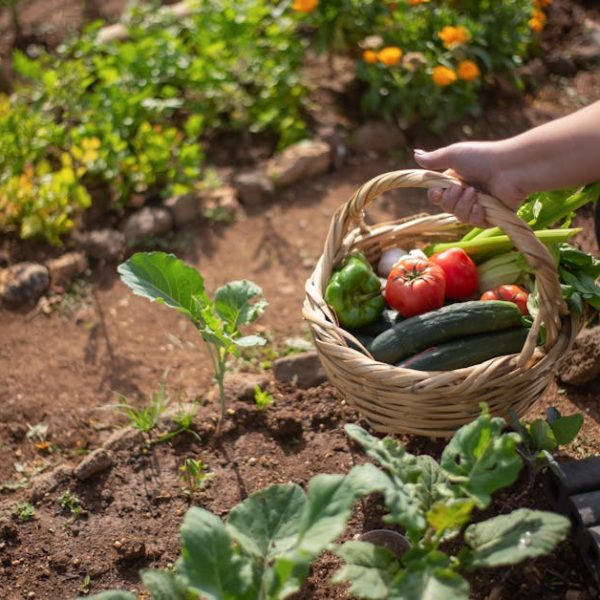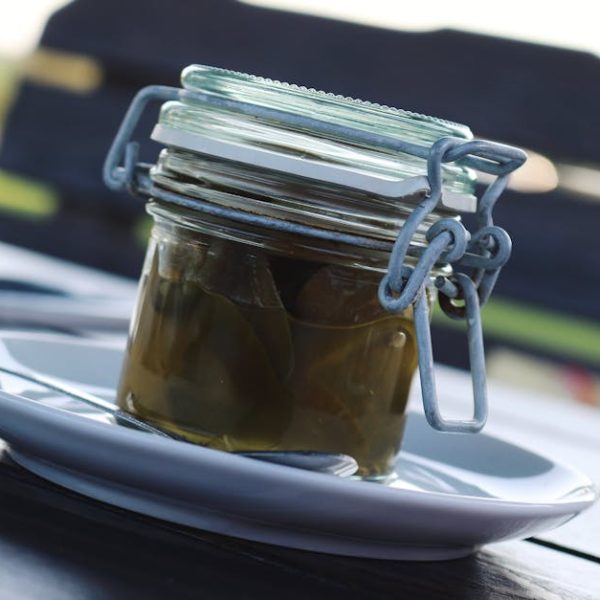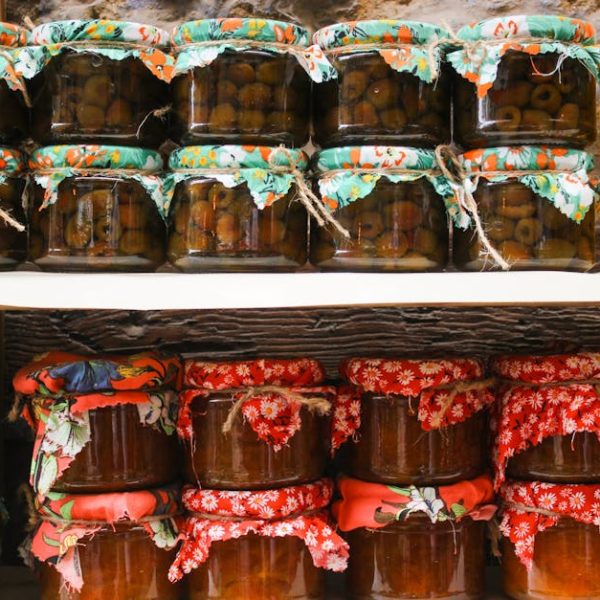Creating your own sauerkraut at home through fermenting and canning might seem like a lofty culinary task, but it’s far simpler than it looks. This guide aims to simplify the process, helping you create grocer-quality sauerkraut from the comfort of your own kitchen, all the while demystifying the art of fermentation.
Understanding the Basics of Fermentation
Good sauerkraut begins with one key ingredient: fermentation. Essentially, fermentation is the breaking down of sugars by bacteria and yeast. Not only does this process help preserve the food, but it also brings about a profound modification in taste, often resulting in a hearty and complex flavor profile.
Fermentation of sauerkraut requires just three basic components:
- Fresh cabbage
- Salt
- Time
For ideal results, you’ll need a few tools:
- A large ceramic or glass container
- A wooden pounder or similar tool
- Mason jars for storage
PRO TIP: Pay close attention to your fermentation environment. The temperature should be steady, ideally between 65 and 72 degrees Fahrenheit. Too hot and the sauerkraut may become mushy; too cold, it may not ferment properly.
Step by Step Process of Fermenting Sauerkraut
The enticing boldness of sauerkraut comes from properly prepared cabbage. Start by getting your hands on a fresh, firm head of cabbage.
The process is straightforward:
- Remove the outer leaves of the cabbage and set aside
- Slice the cabbage into quarters then remove the cores
- Shred the quarters into thin strips
- Add salt to the shredded cabbage gradually, massaging it in until a brine starts to form
Do’s during fermentation:
- Keep cabbage submerged in its brine at all times
- Keep your fermentation vessel in a cool, dark place
Don’ts during fermentation:
- Don’t use metal utensils, which might react negatively with the process
- Don’t be tempted to hurry the process. Allow nature to take its time
PRO TIP: Select heavy, dense cabbages. The heavier the cabbage, the better the quality, and the more likely you are to obtain a good brine.
It’s crucial to treat the salt with respect – it’s not just a flavor enhancer but a preservative. In this process, it calls for a 2% to 3% concentration by weight. This equates to about one to three tablespoons of salt for every five pounds of cabbage.
Knowing When Your Sauerkraut is Ready
Is it ready yet? It’s a question that might often spring to your mind during the waiting phase of fermenting sauerkraut. Recognizing readiness comes down to trust in your senses. A fermented sauerkraut should smell sour but pleasant, taste tangy and be crisp in texture.
Well-fermented sauerkraut will have a vibrant color, while a not yet ready or over-fermented one might appear dull or soft. Always handle with clean, dry hands and utensils to prevent contamination.
PRO TIP: If your sauerkraut isn’t fermented enough, just let it ferment a bit longer. If it’s over-fermented and too tangy, balance the flavor by mixing it with unfermented vegetables.
Procedure for Canning Sauerkraut
Once your sauerkraut reaches its fermented perfection, it’s time to can it for longer preservation and flavor maturation. If canned properly, it can last for over a year.
Here are the steps you need to follow:
- Ladle the sauerkraut into mason jars, pressing down firmly to eliminate any air bubbles.
- Pour the brine over the sauerkraut in the jars, leaving 1/2 inch of headspace.
- Wipe the rims of jars clean with a sterile cloth.
- Secure the lids and bands on the jars, but do not over-tighten them.
- Process the jars in a boiling water canner for about 20 minutes.
Essential tools for the process include a ladle, mason jars with lids, and a canner or large pot.
PRO TIP: Sterilize your jars and lids by washing in hot, soapy water or boiling for 10 minutes to avoid introducing unwanted bacteria to your sauerkraut.
Now, let’s compare canning to refrigerating:
| Canning | Refrigerating | |
|---|---|---|
| Shelf-life | Over a year if unopened | Several weeks to a few months |
| Taste | Improves over time, as flavors continue to develop | Flavors stabilize after a few days in the refrigerator |
| Street cred | Pretty impressive to handle a canning process | Easier process, less technical |
Making Flavored Sauerkraut: Different Variations
Classic sauerkraut has a compelling flavor on its own, but adding different ingredients can take it to new, unexpected heights of culinary delight.
Garlic, caraway seeds, and dill are traditional additives. More adventurous palates might enjoy juniper berries, apple slices, or even seaweeds. Other sources of inspiration could include tangy citrus fruits or warming spices like cinnamon and star anise for a seasonal touch.
Here are some recipes for flavored sauerkraut:
- Caraway and apple sauerkraut
- Turmeric and black pepper sauerkraut
- Cranberry and cinnamon on holiday sauerkraut
PRO TIP: Include your added spices and other ingredients at the same time as the cabbage during the fermentation process to allow the flavors to truly meld together.
Remember, it’s best to approach flavor experiments prudently. Try mixing new ingredients in a small batch first. Once you’re pleased with the result, go ahead and make a larger portion.
And there you have it! An easy to navigate guide to fermenting and canning your homemade sauerkraut. With a bit of patience and a few cabbages, you’ll be on your way to becoming a sauerkraut savant. Happy fermenting!
Key Takeaway:
- Fermenting and canning sauerkraut at home is a straightforward process requiring simple ingredients and tools.
- Certain practices, like maintaining proper temperature during fermentation, careful salt usage, and keeping the cabbage submerged in its brine, are critical for achieving the best results.
- The readiness of the sauerkraut can be assessed by smell, taste and texture.
- The process of canning helps preserve sauerkraut for over a year, with its flavor maturing over time.
- Experimenting with different ingredients offers a variety of flavored sauerkrauts to suit everyone’s palate.
While the art of fermenting and canning sauerkraut might seem intimidating, a clear understanding of the process coupled with attention to details and a little patience can lead to successful and mouth-watering results. Remember to enjoy the process and savor the rewards of your labor. Happy fermenting!
FAQs
Q: Can I use other vegetables apart from cabbage for fermentation?
A: Yes, many types of vegetables can be fermented, each offering a distinct flavor profile. You can experiment with radish, cucumber, carrots or beetroot to name a few.
Q: What do I do if mold forms on top of my sauerkraut during fermentation?
A: If mold forms, remove it immediately along with any sauerkraut that it has touched. Ensure that the cabbage stays submerged in the brine to prevent further mold formation.
Q: How long does it take for the sauerkraut to ferment?
A: The fermentation period can vary from a few days to several weeks, depending on the temperature and desired taste. Typically, it takes about 2 weeks.
Q: How will I know if my canned sauerkraut has gone bad?
A: Indications of spoilage include a drastic change in color, presence of mold, leakage from the jar, bulging lid or a foul smell upon opening.
Q: Can I use the same fermentation and canning process for making other fermented foods?
A: Yes, the basic principles of fermentation and canning are the same. However, different vegetables may need different amounts of salt or different fermentation times.
Feel free to share this article with fellow sauerkraut enthusiasts and do explore more informative posts on our website.






